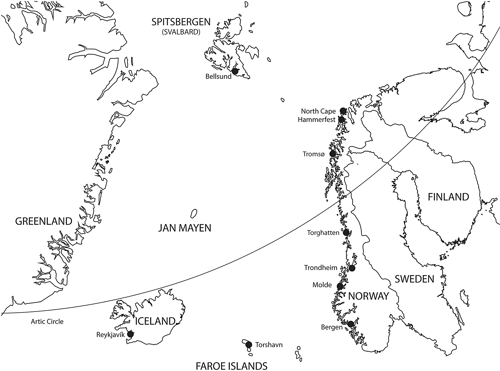New Publication: Count Otani Kozui’s 1900 northern cruise: A Japanese “explorer tourist” in the Nordic Arctic

The paper "Count Otani Kozui’s 1900 northern cruise: A Japanese “explorer tourist” in the Nordic Arctic" of Kristín Ingvarsdóttir, member of the Thematic Network on Arctic in Asia and Asia in the Arctic, is published in Polar Record.
The paper tells the story of the globe-trotting Count Otani who visited the Arctic in year 1900 and was probably among the first Japanese tourists to visit the Arctic, at least the Nordic Arctic. He visited Tromsø, Spitsbergen (Svalbard), Reykjavik and other "new“ destinations in the North. The paper is open access.
Abstract
In the year 1900, Otani Kozui, along with three travel companions, ventured on a one-month Arctic cruise, visiting the Norwegian fjords, the North Cape, Spitsbergen (Svalbard) and Iceland. The turn of the 20th century was a formative time for early Arctic tourism, and the aura of exploration was still a part of the northern allure. While Otani and his friends were not the first Japanese to cross the Arctic Circle, they were seen among their contemporaries as holding the record for being the first Japanese to cross the 70th parallel, which became a badge of honour in the exclusive Arctic Circle Society that was established in Japan in the early 1930s. As one of Japan’s most important 20th-century explorers, Otani is well known for having collected and studied Buddhist treasures from across Central Asia and the Silk Road. This paper aims to establish the facts surrounding Otani’s Arctic cruise and the Arctic Circle Society, both of which have gone mostly unnoticed by contemporary scholars. The paper also discusses how Otani’s voyage – which contains elements of tourism, study and competition – should be perceived, both in the context of his legacy and the broader historical developments of the era.

The main destinations of the Cuzco during the Arctic cruise.
Ingvarsdóttir, K. (2024). Count Otani Kozui’s 1900 northern cruise: A Japanese “explorer tourist” in the Nordic Arctic. Polar Record, 60, e19. DOI: https://doi.org/10.1017/S0032247424000184
